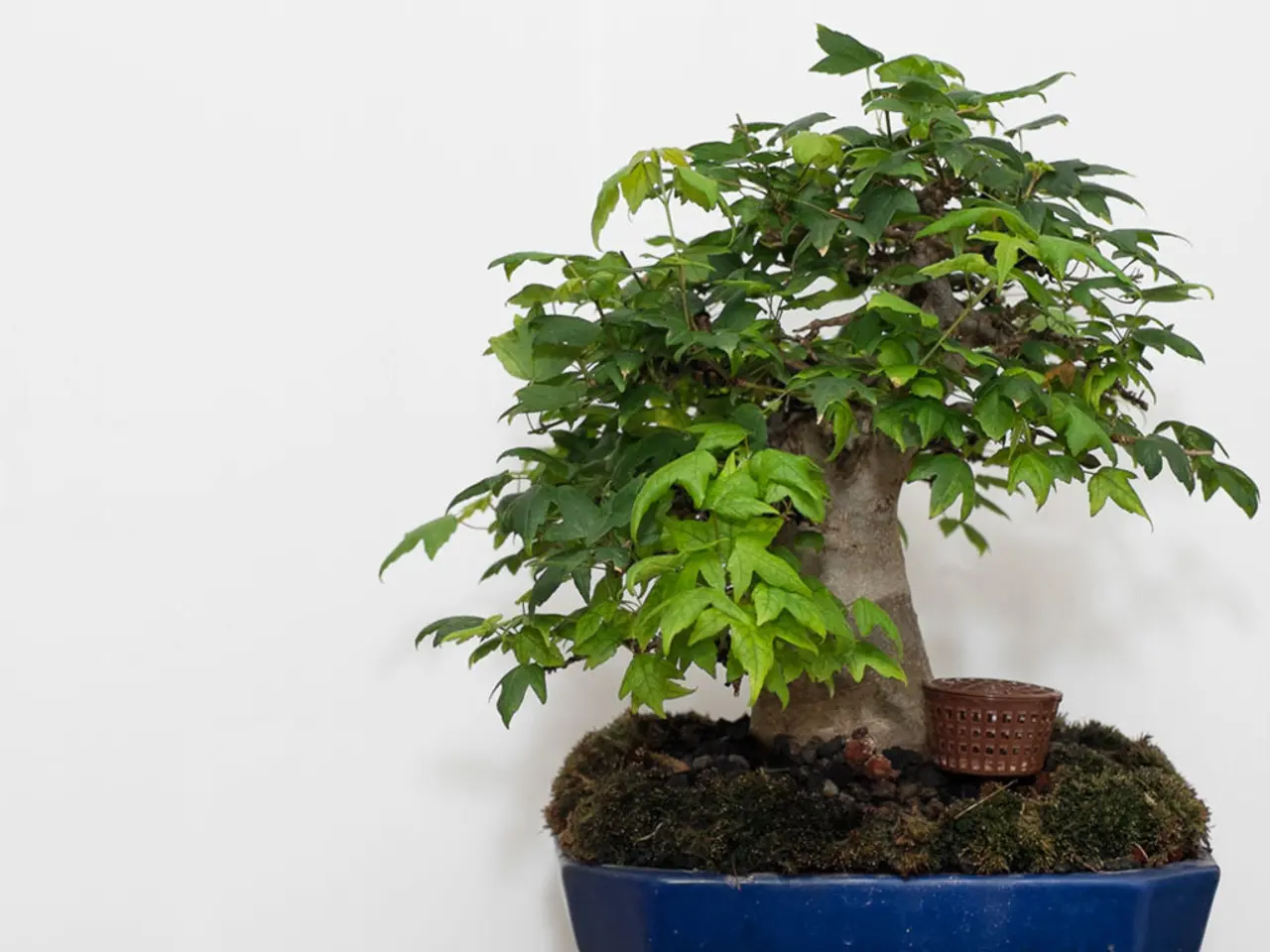Reviving a Neglected Bonsai Through Deep Watering and Restoration
In the intricate world of bonsai cultivation, one common challenge is dealing with an underwatered plant. Over 70% of indoor bonsais succumb to dehydration, highlighting the importance of attentive care.
An underwatered bonsai can exhibit symptoms such as wilting leaves, dry and compacted soil, brown leaf tips or edges, and leaf drop. To revive such a plant, key techniques include gradually increasing watering, monitoring soil moisture carefully, and improving care to reduce stress on the tree.
Watering is the first step towards revival. Slowly rehydrate the bonsai by soaking the soil thoroughly but gently. Soak the pot in water for about 10–30 minutes if the soil is very dry, allowing the roots to absorb moisture evenly. Alternatively, water with a gentle stream until water drains from the bottom.
Soil moisture monitoring becomes a crucial aspect of ongoing care for a recovering bonsai. Check the soil frequently before watering again: the top layer should be dry, but the soil beneath should remain moist to avoid shock or root rot.
Humidity and environment play a significant role in the recovery process. Increase humidity around the bonsai by misting leaves and placing a humidity tray beneath the pot if indoors.
It's advisable to avoid fertilizing immediately after underwater stress; wait until the tree shows recovery signs (new healthy growth).
Pruning dead or excessively browned leaves helps the plant focus energy on repair. Pruning judiciously can play a pivotal role in promoting recovery in an underwatered bonsai.
Repotting may help if the soil has become compacted or hydrophobic due to long dryness—it improves water penetration and root oxygenation. However, consider the potential benefits of fresh soil and improved drainage against the added stress it may cause.
Use a proper bonsai soil mix that drains well but retains some moisture to prevent future underwater stress. It is generally recommended to use filtered or distilled water for deep watering to minimize mineral buildup and prevent potential root damage.
A gentle yet consistent misting regimen serves as a pivotal component of humidity support. Creating a humid microclimate can be achieved by placing the bonsai in a shallow tray filled with water and pebbles. Regularly rejuvenating your bonsai with gentle, generous misting is essential, particularly during the recovery period.
With patience and dedication, a bonsai will begin to thrive, its roots regaining strength, and its leaves plumping with renewed vitality. The strategic application of fertilizer can be a pivotal component of revitalizing an underwatered bonsai.
Shading, temperature regulation, and pest control are essential measures to protect a water-stressed bonsai from further stress. Maintaining a consistent watering schedule is crucial to the ongoing care of a recovering bonsai.
With patience and dedication, the art of bonsai cultivation becomes a poignant celebration of life's fragility and beauty.
In the realm of bonsai care, the importance of maintaining a balanced ‘lifestyle’ for indoor plants is underscored, especially in terms of ‘watering’ and ‘soil moisture’. To help revive underwatered plants, techniques such as gradually increasing watering, monitoring soil moisture carefully, and ensuring proper humidity and environment are key.
Enhancing one's bonsai 'home-and-garden' can further support the recovery process. This may involve strategic 'pruning' of dead or excessively browned leaves to focus energy on repair, and possible 'repotting' if the soil has become compacted or hydrophobic.
In the spirit of self-improvement, becoming informed about the right ‘food-and-drink’ for bonsai can also make a difference. This includes using a proper bonsai soil mix that drains well but retains some moisture, as well as employing the use of filtered or distilled water for deep watering.




